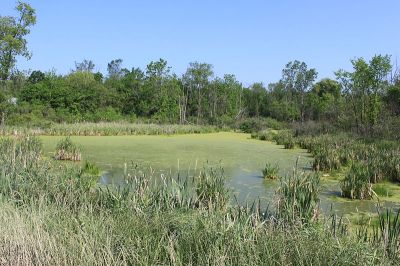Although the use of algae in the production of biofuels has enormous potential, the industry is struggling to grow consistent volumes at realistic prices. An EU-funded initiative made up of leading researchers investigated ways to utilise light energy to improve algae cultivation methods.
Light intensity is a key factor in algal growth and conventional open
pond algae cultivation is inefficient in converting sunlight into
biomass. Open ponds are shallow artificial ponds typically built in a
circular or raceway configuration that use paddle wheels or other
mechanisms to continually agitate the water. Algal growth is encouraged
through the addition of nutrients and carbon dioxide.
An alternative method is to use photobioreactors (PBRs), closed systems with controlled light distribution and environment. However, although existing PBRs show significantly increased productivity, they are highly complex and expensive to build. PBRs are artificial closed-system algal growing environments that provide a controlled and measurable process for consistent algal production.
The EU-funded
SOLALGEN project, aimed to build a low-cost light collection and distribution system for increasing algae production. Hybrid open pond-photo bioreactor technology was developed that exploits the advantages of both methods of algal cultivation. It combined the low capital and operating costs of open ponds with the distribution systems of PBRs to create a new hybrid technology.
SOLALGEN's prototype was based on improvements to an existing PBR unit, which included the addition of an open pond unit. Researchers focused on the light/optical system, which was installed on both the PBR and open pond units. In addition, a waste heat exchange system was developed that enables waste heat to be reused. The system was used to improve growing conditions during the cold season.
All sensors were tested and validated at the laboratory scale and a series of measurements conducted for the main factors affecting algal growth. Parallel experiments were conducted on the PBR and open pond unit, both with and without SOLALGEN improvements in order to determine the impact on production unit yield.
SOLALGEN will help to bring down the cost of algal cultivation, thereby reducing the cost of algae-derived biofuels to the point where they will be competitive with oil. Algae can also be used in the production of health food supplements, aquaculture feeds, cosmetics, pigments and antioxidants.

